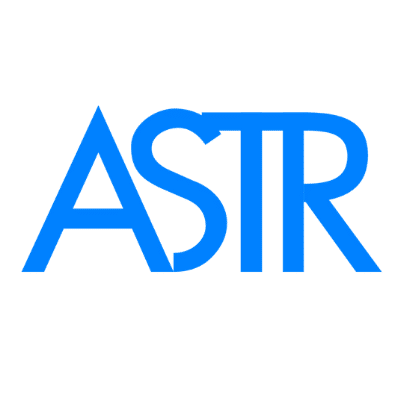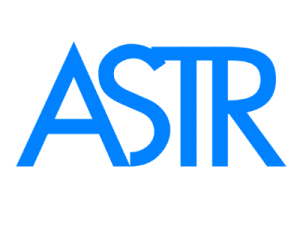Correct Kyphosis Naturally: Symptoms, Types, Healing Cycle & Treatment
Correct Kyphosis Naturally: Symptoms, Types, Healing Cycle & Treatment

What is Kyphosis?
Kyphosis is described as increased forward curvature of the vertebral column, which can be observed along the sagittal plane. Excessive forward curvature is termed hyperkyphosis. Kyphosis may be a manifestation of degenerative changes occurring in the intervertebral discs. Excessive curvature contributes to the instability of the spine. The onset of this condition increases with the increase in age. The incidence of kyphosis is likely to increase in females, particularly during menopause. (1) The following sections describe the different types of kyphosis, the clinical presentation of kyphosis, and effective and ineffective treatments in the context of the normal healing cycle.
Symptoms of Kyphosis
Individuals with kyphosis may present with symptoms listed below.
- עייפות
- Stiffness of the spine
- Tightness of the hamstrings muscles
- Rounded shoulders
- Mild back pain
- Visible hump on the back
Types of Kyphosis
Following are the three different types of kyphosis. Other causes of kyphosis may include spine-related injuries, slipped discs, malignancies, osteoporosis, an increase in age, and infections in the spine. (1)
Postural Kyphosis
Postural kyphosis occurs predominantly in female adolescents. Slouching posture elevates the degree of the forward curvature which leads to the stretching and subsequent weakening of posterior ligaments and extensor muscles. Individuals with postural kyphosis have a normal structure of the spine. This type of kyphosis is benign in most cases.
Scheuermann’s Kyphosis
Scheuermann’s kyphosis or juvenile kyphosis is described as structural deformation of thoracic or thoracolumbar vertebrae, arising prior to the onset of puberty. This type of kyphosis may be hereditary as it occurs in monozygotic twins. Juvenile kyphosis is a manifestation of non-uniform ossification and mineralization of the endplates of vertebrae during growth and development.
Congenital Kyphosis
This form of kyphosis is relatively uncommon and is related to neurological complications. Congenital kyphosis is categorized into type 1 or failure of formation and type 2 or failure of segmentation. Congenital kyphosis is the most prevalent cause of spinal-deformities-related spinal cord compression after tuberculosis.
מחזור ריפוי רגיל
The normal healing cycle consists of three key phases that are the inflammatory phase, the proliferation phase, and the maturation or the resolution phase. Prior to the description of effective therapeutic strategies for the management and treatment of kyphosis, it is important to understand the mechanisms of each phase of the healing cycle which are described as follows.
שלב הדלקת
The healing cycle initiates with the inflammation phase. This phase is characterized by the recruitment of the inflammatory cells at the site of injury driven by injurious stimuli. These cells release cytokines and inflammatory mediators, which in turn cause the infiltration of immune cells at the site of injury. Inflammation is marked by cardinal signs that include redness, loss of sensation, swelling, warmth, and pain. In chronic conditions, inflammation persists for a relatively longer duration.
שלב התפשטות
The healing cycle then progresses to the proliferation stage. This stage is characterized by re-epithelization, collagen deposition, extracellular matrix synthesis, and the formation of new blood vessels a process called angiogenesis. In chronic conditions, the proliferation stage fails to resolve and gives rise to muscle trigger points, fascia restrictions, muscle spasms, and the formation of excessive scar tissue.
Maturation or Resolution Stage
The healing resolves as it progresses to the final stage called the maturation stage. During this phase, deposition of type I collagen occurs along with scar formation and wound contraction. In chronic conditions, the healing cycle fails to progress to the maturation stage and oscillated between the inflammation and proliferation stages.
Ineffective Treatments of Kyphosis
Certain treatments of kyphosis that are commonly utilized at homes and clinics are not only ineffective for the treatment of kyphosis but may also exacerbate the condition. The ineffective therapeutic strategies are listed as follows.
- Application of ice and heat therapy on the back
- Electrical stimulation on the back
- Massage therapy on the back
- Massage therapy with a foam roller on the back
- Stretching of the back
- Strength exercises during the inflammation stage of healing
- Mobilization of the back
Effective Treatments of Kyphosis
- Healthy lifestyle modifications are useful for the treatment and management of kyphosis. One must maintain proper posture, stabilize the core, and remain active by engaging in pain-free activities.
- The resolution of the inflammation stage of the healing cycle is an important step in the treatment and management of kyphosis. An important measure is to eat a healthy anti-inflammatory diet that contains relatively higher amounts of fruits, vegetables, and legumes. One must abstain from processed meat, trans fat, and refined sugars. Another crucial approach to the resolution of the inflammation phase in the treatment of kyphosis is the application of magnetic therapy via the MagnaHeal device. This device is made with neodymium and anti-inflammatory substances. Mild inflammation can be treated using MagnaHeal 1 whereas severe inflammation can be treated using MagnaHeal 2. One must also overcome the nutrient deficiencies associated with delay in the resolution of the inflammation phase. (2, 3)
- In addition to the resolution of the inflammation, one must also consider the resolution of the proliferation stage of the healing cycle in order to treat kyphosis. This therapeutic measure requires the use of different ASTR tools which are enlisted as follows.
- A1 Tool is useful for the release of aponeurotic and superficial fascia restrictions.
- A3 Tool is useful for the release of superficial scar tissue. It is also used for releasing superficial trigger points, also called muscle knots.
- A5 Tool can be used for releasing deep scar tissue and deep muscle trigger points. It is also used for releasing fascia restrictions of endomysium, epimysium, and perimysium.
הפניות
- Lam JC, Mukhdomi T. Kyphosis. [Updated 2022 Jan 15]. In: StatPearls [Internet]. Treasure Island (FL): StatPearls Publishing; 2022 Jan-. Available from: https://www.ncbi.nlm.nih.gov/books/NBK558945/
- Ross, C. L., & Harrison, B. S. (2013). Effect of pulsed electromagnetic field on inflammatory pathway markers in RAW 264.7 murine macrophages. Journal of inflammation research, 6, 45
- Ricker, M. A., & Haas, W. C. (2017). Anti-Inflammatory Diet in Clinical Practice: A Review. Nutrition in clinical practice : official publication of the American Society for Parenteral and Enteral Nutrition, 32(3), 318–325. https://doi.org/10.1177/0884533617700353

